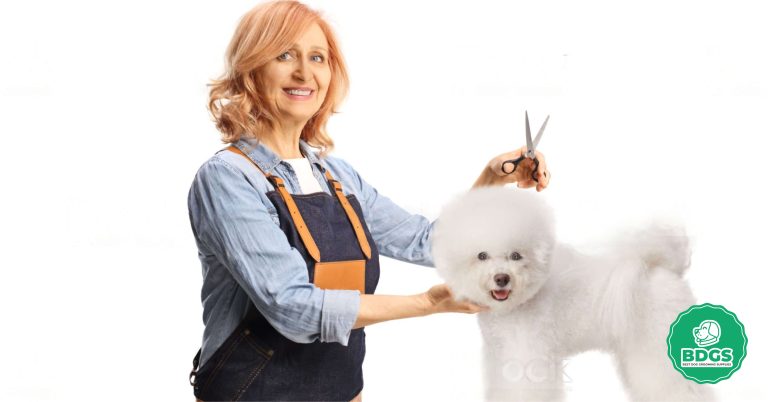Putting on an apron can be a useful and sensible addition to many activities and jobs, as it can protect you and make things easier. An apron protects your clothes from spills, spots, and dirt when cooking, gardening, making, or doing messy work.
If you wear an apron, you can stay clean and save time by not changing clothes as often. Aprons are useful for more than just keeping your clothes clean. They often have multiple pockets or sections that let you keep important tools or items close at hand.
There are many different types of aprons, from simple and useful to stylish and on-trend, so you can find one that suits your taste. Whether you’re a cook, a farmer, or someone who likes to get their hands dirty, learning to use an apron correctly will help you get the most out of it. You can confidently do your work and stay clean and put together with a beautiful and useful apron.
Introduction
What is the Importance of wearing an apron during various activities?
There are many reasons why it’s important to wear an apron when doing different things. Here are some important reasons why it’s important to wear an apron:
- Protection of Clothing: An apron is a buffer to keep spills, stains, and dirt from getting on your clothes. Whether cooking, baking, painting, gardening, or doing something messy, an apron protects and keeps your clothes clean.
- Hygiene and Food Safety: An apron is one of the most important ways to keep hygiene and food safety in the kitchen. It keeps your clothes from getting dirty with the food you’re making by putting a barrier between them. It is especially important when dealing with raw products or chemicals that could damage them.
- Time and Effort Saving: Wearing an apron saves you time and Effort because you don’t have to change your clothes or do washing as often. You can focus on the job without thinking about getting your clothes dirty since your Apron will take the brunt of any mess.
- Convenience and Accessibility: Many aprons have pockets or other storage spaces, making it easy to keep important tools, dishes, or supplies nearby. It makes your actions more efficient and keeps you from looking for things or losing them.
- Professionalism and Identity: In some jobs or settings, like cooking or making crafts, having an apron makes you look more professional and gives you a sense of who you are. It shows skill, attention to detail, and a desire to keep things clean, which can be especially important in fields where looking and cleaning are very important.
What are the Benefits of using an apron for different purposes?
There are many perks to using an apron for different things. Here are some of the most important reasons to use an apron:
- Protection of Clothing: Whether you’re cooking, baking, making crafts, or doing housework, an apron gives your clothes an extra layer of protection from spills, spots, and dirt. It will help your clothes stay clean and in good shape.
- Hygiene and Food Safety: An apron helps keep hygiene and food safety in the kitchen. It keeps germs from getting on your clothes and reduces the chance of cross-contamination, ensuring you follow the right way to handle food.
- Convenience and Accessibility: Aprons often have pockets or other spaces where you can keep tools, utensils, or other things you need close at hand. It makes it so you don’t have to search for things or stop what you’re doing to find them.
- Efficiency and Productivity: If you wear an apron, you can work faster and with fewer breaks. You won’t have to worry about getting your clothes dirty or ruining them, so you can pay more attention to the job and do it better.
- Versatility and Adaptability: There are many different kinds and designs of aprons, each for a different activity or person. There is an apron for everyone, whether you need a full-length one for heavy-duty jobs or a waist one for smaller ones.
- Professional Image: Wearing an apron can help you look more professional in some jobs, like cooking, serving, or doing projects. It positively impacts clients, customers, or guests because it shows efficiency, attention to detail, and a desire to keep things clean.
- Psychological and Emotional Benefits: Putting on an apron can give you a mental boost and help you focus on the job. It makes you feel ready and prepares your mind for the activity, giving you more confidence and more productivity.
Understanding Different Types of Aprons
Overview of Different Apron Styles:
- Full-Length Aprons: Full-length aprons cover you from the neck to the bottoms of your feet. They offer full security for tasks where spills, stains, or dirt are more likely to happen. Full-length aprons are often worn in professional kitchens, workspaces, and factories where the most covering is needed.
- Waist Aprons: Waist aprons, also called “half aprons,” cover the area around the waist and go down to the legs or knees. They are easy to use and move around, so they are good for jobs requiring bending or reaching often. Waist belts are common in places like restaurants, bars, and cafes where workers and bartenders need quick access to pens, notepads, or small tools.
- Bib Aprons: Bib aprons have an upper part resembling a bib covering the chest and stomach. The skirt or body of the Apron goes down to the legs or knees. They protect the front of the body very well and cover it well. Bib aprons are often worn when cooking, baking, making, or farming. They cover the whole body and keep clothes from getting dirty or stained.
- Cobbler Aprons: Cobbler aprons, also called smock aprons, have a front panel covering the chest and stomach and a back panel covering the back. They cover the front and back completely, which makes them great for messy jobs where splatters or spots could happen. Cobbler aprons are often worn in art workshops, schools, and hospitals.
What types of Materials are used in apron construction, and what are their features?
Types of Materials Used in Apron Construction and Their Features:
- Cotton: Cotton is a common material for aprons because it lasts long, lets air through, and is easy to clean. It’s easy to wear and only gets spots or spills easily. Cotton aprons can be used for a lot of different things.
- Polyester: Aprons made of polyester are strong, don’t wrinkle, and keep their color. They last a long time, dry quickly, and clean easily. Polyester aprons are usually used in business or industrial settings because they are strong.
- Denim: Aprons made of denim are strong, long-lasting, and look casual and stylish. They protect well and are often used in workplaces, restaurants, and grilling.
- Leather: Leather aprons are very strong and protective, so they can be used for heavy-duty work. They protect against heat, sparks, and dangerous things. Leather aprons are often worn when welders, blacksmiths, and woodworkers do their jobs.
How do I choose the right Apron based on the intended use?
Choosing the Right Apron Based on the Intended Use:
- Consider the activity: Figure out what job or action you need the Apron for. Check to see how much cover and security you need.
- Evaluate materials: Choose a material that works for what you want to do. Think about how long it will last, how easy it is to clean, how hot it can get, and how waterproof it is.
- Assess style and features:
- Check out the style and the features.
- Choose an apron style that gives you the covering and convenience you need.
- Think about ease features like pockets, flexible straps, and extra tools.
- Fit and comfort: Make sure the Apron is easy to put on and fits well. Look for straps or ties that you can change to get the right fit.
- Personal preference: When choosing an apron, consider your style and how you like things to look. Choose a pattern or color you like that makes you feel good when wearing it.
Preparing for Apron Use
How do you determine the purpose and activity of using the Apron?
Determining the Purpose and Activity of Using the Apron:
- Identify the task: Figure out what you’ll be doing or what you’ll be doing with the dress. Is it for cooking, baking, making crafts, farming, or doing jobs around the house? Knowing the job lets you determine how much safety and usefulness you need.
- Consider the potential mess: Look at how likely the job will cause spills, stains, or dirt. For jobs that involve liquids or messy things, you may need an apron that covers more of your body or is water-resistant.
- How do I select the appropriate Apron based on the task at hand?
- Assess coverage and length: Choose an apron that covers enough for the job. Consider a full-length apron to protect your clothes from head to toe when doing activities that are more likely to make messes. For small jobs, a waist or cafe apron might be enough.
- Material and features: Consider the action to decide what material the Apron should be made of. Choose a stain-resistant or easy-to-clean cloth for cooking or working with things that could damage. The Apron can be more useful if it has pockets or other spaces to keep tools or items close at hand.
How do I ensure the proper fit and comfort of the Apron?
- Assess coverage and length: Choose an apron with enough coverage for the job. Consider a full-length apron to protect your clothes from head to toe when doing activities that are more likely to make messes. For smaller jobs, a waist or cafe apron might be enough.
- Material and features: Consider how the action will affect the Apron’s material. Choose a stain-resistant or easy-to-clean cloth for cooking or working with things that might stain. You can keep tools or cooking supplies nearby if the Apron has pockets or other storage spaces.
Step-by-Step Guide to Using an Apron
Step 1: Putting on the Apron correctly
Hold the sheet by the sides and line it up before you. Depending on the style of the Apron, put your arms through the armholes or shoulder straps. Hang the Apron in front of your body.
Step 2: Securing the apron straps or ties
If the Apron has straps, cross them behind your back and bring them around your waist in front. If it has ties, tie them around your waist to keep it in place. Ensure the straps or ties aren’t twisted and lie flat against your body.
Step 3: Adjusting the Apron for a comfortable fit
Change how long the straps or ties are to get the right fit. The Apron should cover the front of your body without being too long or too short.
Step 4: Utilizing the pockets or compartments of the Apron
If your Apron has pockets or other places to put things, use them. Use them to store tools, dishes, or anything else you might need for the job. Spread the weight evenly to keep the balance and avoid putting too much pressure on one side.
Step 5: Maintaining proper posture and movement while wearing the Apron
Pay attention to how you stand while wearing the Apron. If you want to avoid slouch, stand or sit with a straight back. Make sure the Apron is kept from your freedom of movement. Try not to pull or tug on the edge too much.
Tips for Different Uses of Aprons
- Cooking and Baking: An apron is a must-have when you cook or bake because it keeps your clothes from getting dirty or stained. Whether stirring a pot of sauce or mixing the ingredients for a cake, an apron protects your clothes from getting dirty and stained.
- Gardening: When you look at your yard, an apron keeps dirt, mud, and plant parts from getting on your clothes. It acts as a barrier, keeping dirt and leaves from sticking to your clothes while you plant, weed, or prune.
- Crafting and DIY Projects: Crafters and do-it-yourself fans can use aprons. With pockets or sections, they keep tools, paintbrushes, and other small things close at hand. An apron helps you stay organized and keeps you from losing tools while you work on projects.
- Hairdressing and Salon Use: When you do haircuts or work in a studio, you need an apron to protect your clothes from chemicals, hair bits, and dyes. They make a buffer so that these substances don’t get on your clothes. It keeps your clothes clean and gives you a professional look.
Aprons are useful for all of these things because they protect your clothes and help you stay organized. They make the experience more fun and quick because you don’t have to worry about making a mess or getting something stained.
Cleaning and Maintenance of Aprons
How do I properly care for different types of aprons?
To care for different kinds of aprons correctly, you need to follow different rules based on their materials and how they are made. Here’s how to take care of the different kinds of aprons:
Cotton or Fabric Aprons:
Check the care label: Read the manufacturer’s care notes to learn how to wash and dry the item correctly.
- Pre-treat stains: Before washing the Apron, remove any stains or spots with a stain cleaner or a small soap.
- Machine wash: Use a gentle cycle and cold or lukewarm water to wash aprons made of cotton or cloth.
- Use mild detergent: If you don’t want the cloth to get damaged or the color to fade, use a light detergent.
- Avoid harsh chemicals: Don’t use bleach or other hard chemicals unless the care description says to.
- Dry appropriately: Tumble dry it on low heat or let it air dry to keep it from shrinking or getting damaged. Remove quickly to avoid getting wrinkles.
Leather or Suede Aprons:
- Spot clean: Use a soft cloth or sponge wet with light soapy water for small stains to clean the area gently. Don’t let the leather or fur get wet.
- Professional cleaning: If the Apron has a lot of spots or needs a deep clean, it’s best to hire a leather or suede cleaning service.
- Condition the leather: To keep leather aprons soft and wet, occasionally use a leather conditioner or leather balm, as directed on the package.
Vinyl or Waterproof Aprons:
- Wipe clean: You can clean vinyl or waterproof aprons with a wet cloth or mop. If you have to, use light soap or cleanser.
- Avoid abrasive materials: Don’t use hard scrub brushes or other rough cleaning tools on your Apron, as they can damage the weatherproof layer or surface.
- Air-dry: After cleaning, hang or lay the Apron flat to let it air-dry. Don’t fold or store it while it’s still wet because that can cause mildew or bad smells.
Denim or Canvas Aprons:
- Check the care label: Check the manufacturer’s care directions for specifics on washing and drying the item.
- Pre-treat stains: Before washing, clean any stains on the Apron by hand or with a stain solution.
- wash: Wash aprons made of denim or linen in the washing machine on a gentle run with cold or warm water.
- Use like colors: To keep colors from running, wash like colors together.
- Air-dry or tumble-dry: To keep the fabric’s shape and feel, air-dry the Apron or tumble-dry it on low heat.
How to wash and dry guidelines?
Washing and Drying Guidelines:
- Please read the care instructions: Check the label on the back of your Apron or any care directions that came with it. These directions tell you how to wash something and at what temperature.
- Pre-treat stains:
- Treat any stains or spots on the Apron before you wash it.
- Put a small amount of stain cleaner or soap on the spot and rub it in gently.
- Let it sit for a few minutes before washing.
- Separate by color and fabric: Separate your aprons by color and fabric type to keep the colors from spilling or the fabric from getting damaged. Wash clothes of the same color together and keep delicate or light clothes away from heavy ones.
- Use the appropriate washing method: Follow the care guidelines and wash your dress correctly. Most aprons can be washed in a machine with cold or warm water on a gentle or delicate cycle. Don’t use strong chemicals or bleach if the care directions don’t say otherwise.
- Dry appropriately: Look at the care notes to see how your Apron should be dried. Some aprons can be dried in a machine on low heat, while others must be dried in the air. High heat can cause some fabrics to shrink or get damaged.
How do I store the Apron when it is not in use?
Storing the Apron:
- Clean and dry thoroughly: Ensure your Apron is completely dry before putting it away to prevent mold or mildew from growing. If you need to, let the Apron dry in the air before you fold or hang it.
- Fold or hang properly: Fold your Apron nicely to keep wrinkles and creases to a minimum. If you want to hang it, use a hanger with a strong hook to keep the fabric or straps from getting bent.
- Choose a suitable storage location: Place your Apron somewhere clean, dry, and with good airflow. Avoid damp places like basements and bathrooms to keep damage from happening.
- Avoid direct sunlight: If it’s in the sun for a long time, it can fade or change color. Keep it out of bright sunlight if you want it to look like it did when you bought it.
Conclusion
In conclusion, using apron has several benefits that make it easier, safer, and more efficient to do many things. Aprons are useful because they protect your clothes from spills, spots, dirt, and other debris.
They help keep the kitchen clean and food safe, make tools and materials easy to find when making crafts or doing DIY projects and keep chemicals and hair bits from getting on clothes when trimming or using a salon. By using aprons in your daily life, you can save time by not having to change clothes as often, cut down on the amount of cleaning you have to do and work faster without thinking about messes or damage to your clothes.
Because there are so many different types of aprons, materials and designs, you can find the right one for every job, whether cooking, farming, making crafts, or doing something else with your hands. Please take advantage of the ease and safety of aprons and make them a regular part of your life. With an apron, you can do your jobs easily, knowing that your clothes are safe, and enjoy your work.
Frequently Asked Questions
Follow these steps to put on an apron the right way:
Put it Over Your Head: Hold the apron by the top corners, with the front facing you, and pull it over your head like a T-shirt.
Set the Length of the Neck Strap: Set the neck strap length so that the apron fits snugly on your upper body without pulling on your neck.
Tie the Waist Straps: If the apron has waist straps, wrap them around your back at your waist. You can tie them in a bow or a knot, depending on your preference.
Length: If the apron is too long, fold or cut the edge at the bottom to the size you want. The apron should cover your clothes to keep them from getting dirty or stained.
An apron is a safe piece of clothing you wear over your regular clothes to protect them from spots, spills, and dirt while doing messy things. People often wear aprons when cooking, baking, farming, making crafts, and doing other dirty or messy-looking jobs.
An apron’s main job is to keep your clothes clean and free of spots, spills, and dirt. By wearing an apron, you can keep your clothes clean while cooking, baking, cleaning, or doing any other job that will likely make a mess. Aprons are also helpful for carrying tools or other things you need for a job.
How you tie your apron will depend on how it is made. Some aprons have waist straps that you tie around your back, and others may have straps that you tie in the front. Apron ties in the back are linked in a bow or knot behind the back, while apron ties in the show are connected in a bump or knot around the waist. How to join an apron depends on the person and the style of the apron.







